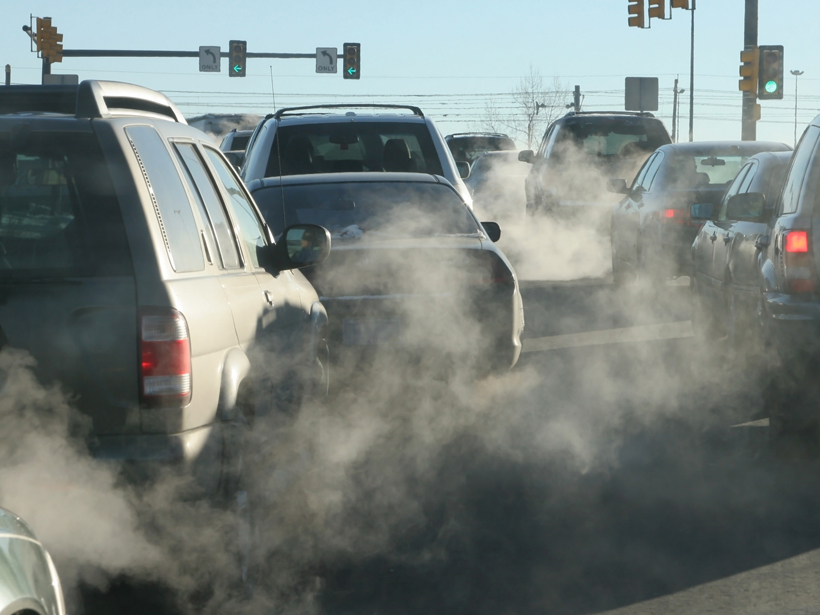Agencies of the U.S. federal government may change the way they estimate the monetary impacts of climate change from carbon dioxide (CO2) emissions if policy makers and scientists heed recommendations in a new report.
The calculation, used in federal impact analyses and known as the social cost of carbon dioxide (SC-CO2), needs a revision to improve its scientific basis, transparency, and characterization of uncertainties, according to Valuing Climate Damages: Updating Estimation of the Social Cost of Carbon Dioxide, issued on 11 January by the National Academy of Sciences (NAS).
The social cost of carbon dioxide puts in dollar terms the negative and positive impacts from CO2.
The social cost of carbon dioxide puts in dollar terms the negative and positive impacts from CO2, including those to human health, property damage from increased flood risk, energy use, changes in agricultural productivity, and nonmarket damages such as ecosystem services. U.S. government agencies are required, by a 1993 White House executive order and a 2008 court ruling, to use SC-CO2 in analyzing regulations such as standards for emissions from vehicles and power plants.
However, SC-CO2 has come under fire from some critics, including Rep. Rob Bishop (R-Utah), chair of the House of Representatives Committee on Natural Resources, who has questioned “arbitrary assumptions about discount rates, socioeconomic predictions, and measuring changes in temperature.”
Also, the Trump administration could have a different perspective on SC-CO2 than the Obama administration. For instance, Thomas Pyle, Trump’s transition leader for the Department of Energy, wrote in 2016 that “during the Trump Administration the [SC-CO2] will likely be reviewed and the latest science brought to bear. If [it] were subjected to the latest science, it would certainly be much lower than what the Obama administration has been using.”
Revising the Methodology
Government agencies currently employ an SC-CO2 estimation methodology that averages estimates of monetized damages produced by three integrated assessment models. That methodology was developed by the Interagency Working Group (IWG) on the Social Cost of Greenhouse Gases, which requested the report.
This report recommends, instead, an “integrated modular approach” to estimating SC-CO2. Following that approach, each of the estimate’s four modules—socioeconomic and emissions projections, climate modeling, the estimation of climate impacts and damages, and discounting net monetary damages—would undergo a more thorough analysis from specialists.
The report recommends a set of criteria to justify improvements, a regular updating process, and a research agenda to help direct the scientific community.
At the briefing, committee cochair Richard Newell said he hopes that the federal regulatory process and the scientific community will embrace the report’s recommendations so that “the best available scientific evidence is brought to bear on the social cost of carbon dioxide.”
In follow-up comments to Eos, Newell, president and CEO of Resources for the Future, a Washington, D.C.–based think tank that focuses on the economics of environmental and natural resource policy, said that the report also provides a framework for experts to engage in the continuous improvement of the estimates of the social cost of carbon. “Our report puts forward recommendations that are not just one-off, and I would hope that they have an impact on the way that this is approached for a long time to come,” he said.
Different Perspectives on the Social Cost of Carbon
Marlo Lewis Jr., senior fellow with the Competitive Enterprise Institute, a Washington, D. C.–based think tank focused on limited government and free enterprise, said that the report’s recommendation of a modular approach would make the process of determining the SC-CO2 more transparent.
However, Lewis told Eos that he is “dubious” about efforts to monetize the social cost of carbon dioxide and called it “an assumption-dependent exercise.” He said, for instance, that two IWG assessment models don’t consider carbon dioxide fertilization benefits and that it is difficult to predict global conditions centuries into the future.
“By raising the social cost of carbon, you can pretty much make any cost look like it’s reasonable to bear.”
“There’s always a great deal of latitude here to do the analysis in such a way that you get results that justify the regulations that you want to impose,” he said. “My impression of the social cost of carbon is that its political function is to make renewables look like [a] bargain at any price and make fossil fuels look unaffordable, no matter how cheap, and also to make climate regulations look like a bargain [at] any price. By raising the social cost of carbon, you can pretty much make any cost look like it’s reasonable to bear.”
An Improvement to the Models
The report’s recommendations, if adopted, would greatly increase confidence in estimates of the social cost of carbon, according to Frances Moore, an assistant professor in the Department of Environmental Science and Policy at the University of California, Davis. Moore told Eos that the report’s proposed integrated modular approach would allow communities of specialists to work on individual modules such as climate science and bring them up to date with recent science.
She noted that improving the scientific basis of the models, particularly the representation of climate change damages, “is essential” and that the report highlights this in its recommendations on the damages module.
“Much of the documented scientific basis for the model damage functions is 20 years old or more, and some damage functions are entirely undocumented,” Moore said.
With the Trump administration likely to revisit the value of the social cost of carbon used in regulatory analyses, Moore said that the NAS report “will provide important guidance on how that can be done with scientific and economic integrity.”
—Randy Showstack (@RandyShowstack), Staff Writer
Citation:
Showstack, R. (2017), Report calls for revised method to chart cost of climate change, Eos, 98, https://doi.org/10.1029/2017EO066437. Published on 17 January 2017.
Text © 2017. The authors. CC BY-NC-ND 3.0
Except where otherwise noted, images are subject to copyright. Any reuse without express permission from the copyright owner is prohibited.

